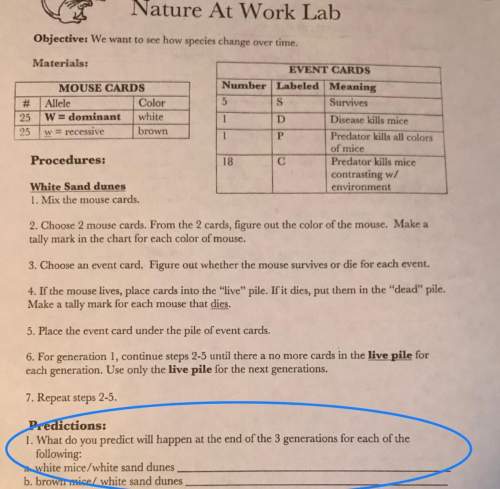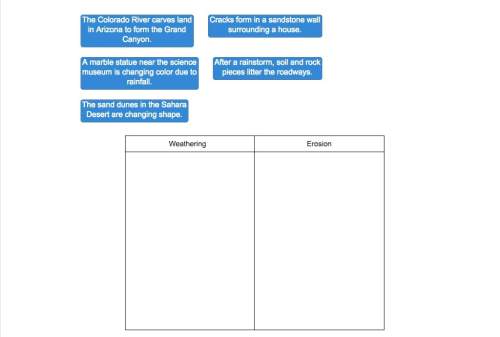
Biology, 07.11.2019 04:31 alyssagibson6057
As altitude increases, atmospheric pressure decreases, which means less oxygen is diffused into the blood from the lungs. for instance, at 18,000 feet you would obtain 29% less oxygen than you would at sea level. this can lead to altitude sickness, or hypoxia as it is called. imagine a mountain climber, who lives at sea level, trying to climb mount kilimanjaro for the first time. the climber is very fit so he plans to summit the 19,341 foot peak in four days, though it usually takes first-time climbers five or six days. use your knowledge of equilibrium to predict the climber’s reaction to this speedy climb, and the reaction needed to restore equilibrium. match the equations to the appropriate blanks in the sentences. make certain each sentence is complete before submitting your answer. equilibrium shifts to o2releaseequilibrium shifts to hbo2formation1. when the climber ascends the mountain before acclimating, to restore homeostasis within the body.2. as the climber rehydrates and rests at a basecamp, hemoglobin (hb) is produced, which is the body's response to the stress. as a result, .3. when the climber returns to sea level before reacclimating, to restore homeostasis within the body.4. as the climber reacclimates to sea level, hemoglobin is replaced at a lower rate, decreasing hemoglobin concentrations in the blood. as a result, .

Answers: 1
Another question on Biology

Biology, 21.06.2019 23:00
The dna in a cell’s nucleus encodes proteins that are eventually targeted to every membrane and compartment in the cell, as well as proteins that are targeted for secretion from the cell. for example, consider these two proteins: phosphofructokinase (pfk) is an enzyme that functions in the cytoplasm during glycolysis. insulin, a protein that regulates blood sugar levels, is secreted from specialized pancreatic cells. assume that you can track the cellular locations of these two proteins from the time that translation is complete until the proteins reach their final destinations.for each protein, identify its targeting pathway: the sequence of cellular locations in which the protein is found from when translation is complete until it reaches its final (functional) destination. (note that if an organelle is listed in a pathway, the location implied is inside the organelle, not in the membrane that surrounds the organelle.)
Answers: 3

Biology, 22.06.2019 00:00
Identify the type of energy used in each action. the flexing of an arm muscle: a signal transduction process by a neuron: a ball at the top of a hill: 1. electrical energy 2. mechanical energy 3. gravitational potential energy
Answers: 2

Biology, 22.06.2019 07:00
What molecules will be best used to compare different species with the exact same sequence of amino acids? why would two species have the same protein even if the molecules in question is different? (hint: transcription to translation to protein).
Answers: 1

Biology, 22.06.2019 08:10
Ascience research group is testing a new type of plant food. one trial is conducted in a controlled experiment. the data from the trial show that the plant that received the new food grew faster than the control plant. the group announces that the new plant food makes plants grow faster. what is the main weakness in this scientific claim?
Answers: 2
You know the right answer?
As altitude increases, atmospheric pressure decreases, which means less oxygen is diffused into the...
Questions



Advanced Placement (AP), 11.08.2021 04:10


Social Studies, 11.08.2021 04:10





Mathematics, 11.08.2021 04:10


Mathematics, 11.08.2021 04:10






Mathematics, 11.08.2021 04:10

History, 11.08.2021 04:10

Chemistry, 11.08.2021 04:10





